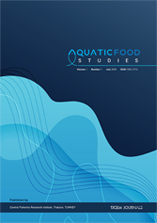Horticultural Studies (HortiS)
2020, Vol 37, Num, 2 (Pages: 123-133)
Effect of Irrigation Waters in Different Salinity Levels on Crop Yield and Energy Use in Greenhouse Tomato Production in Turkey: A Case Study in Kırklareli Province
Ulviye ÇEBİ 1 ,Başak AYDIN 1 ,Selçuk ÖZER 1 ,Ozan ÖZTÜRK 1
1 Atatürk Soil and Water Agricultural Meteorology Research Institute, 39060, Kırklareli / Turkey
DOI :
10.16882/HortiS.810011
Viewed :
3323
-
Downloaded :
2021
This study was carried out in a quonset type plastic covered unheated greenhouse on the lands of Atatürk Soil Water and Agricultural Meteorology Institute in Kırklareli, Turkey. In the study, the effect of different salinity and irrigation water levels which were applied to tomato plant, irrigated by drip irrigation in greenhouse, on yield and energy use efficiency was evaluated and the optimum irrigation application was determined. In the study, `Swanson F1` type tomato was grown as plant material. The trial was carried out on 36 plots with three replications according to split plots experimental design and four different irrigation water salinity levels were on main plots and three irrigation levels were on sub plots. The best result was obtained from T1S2 subject in terms of yield and energy use efficiency. The average yield was determined as 109 060 kg ha-1 and energy output/input ratio, energy productivity and specific energy were found as 1.51, 1.89 kg MJ-1 and 0.53 MJ kg-1 in T1S2 subject, respectively. It was concluded that the optimum method should be on low salinity level and the irrigation water application should be on the level in order to bring the current moisture level to the field capacity.
Keywords :
Energy use efficiency Greenhouse Irrigation Salinity Tomato














